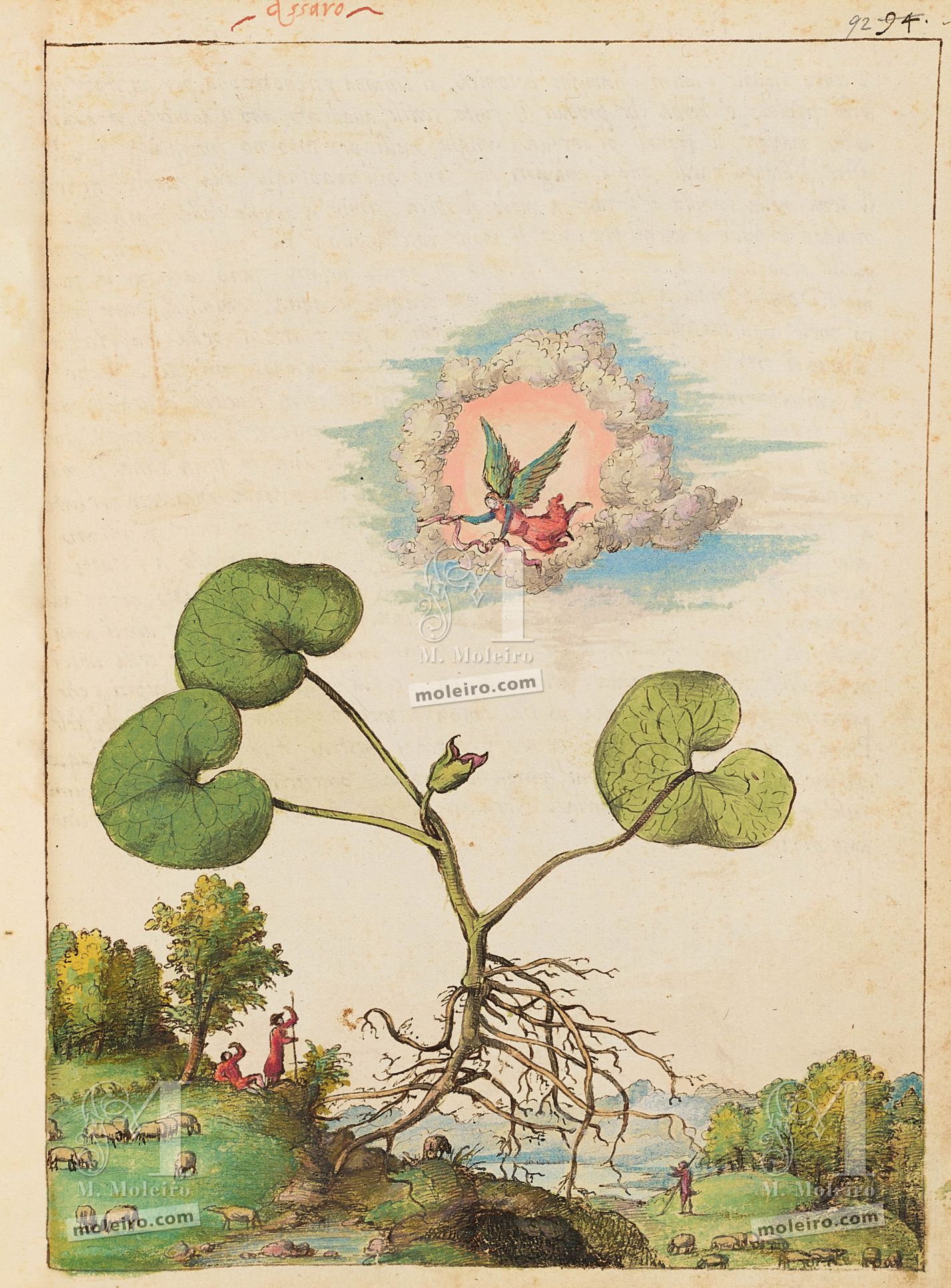"Asarabacca, which some also call the wild nard, is a fragrant herb used in garlands; its leaves are similar to those of the ivy, but smaller and rounder. Among the leaves, close to the root, it produces scented purplish-blue flowers, shaped like the calyxes of the henbane, inside which there is the seed, which resembles that of grapes. It has angular stems, coarse and flexible. It produces a great number of roots, gnarled, thin, and twisted, similar to those of twitch grass but thinner and scented; they have warming qualities and eating them strongly irritates and inflames the tongue. Asarabacca is by nature warm, acts as a diuretic, is of benefit to those suffering from dropsy, and is useful against long-term sciatica. Six drams of the root, drunk with honeyed water, brings down the menstrual cycle and causes purging in the same way as white hellebore. Asarabacca is added to ointments. It grows on shady mountains and is found in great quantities in the Pontus, in Phrygia, in Illyria, and in Italy on the Monti Giustini" (f. 91v).
This plant grows throughout Italy, France, the eastern Mediterranean region, central Europe and western Asia. The whole plant and particularly its tubers contain essential oil, flavonoids and tannins. Its cooking water has purgative and diuretic properties and can soothe dry coughs by stimulating the production of mucous. It has been used in folk medicine since ancient times. Its essential oil gives it an aroma reminiscent of cinnamon.
Ramón Morales
Real Jardín Botánico de Madrid
(Excerpt from the study book of Mattioli's Dioscorides illustrated by Cibo)
